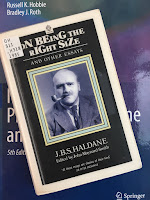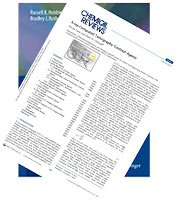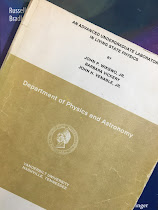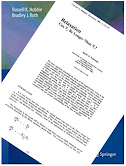 |
| The Great Lakes From Phizzy at Wikipedia. |
 |
| The Death and Life of the Great Lakes, by Dan Egan. |
Iconic disasters have a history of prompting government action. Three years after the Cuyahoga River fire of 1969, Congress passed the Clean Water Act. Two decades later, when the Exxon Valdez ran aground and dumped 10.8 million gallons of crude oil into Alaska’s Prince William Sound, images of cleanup crews using paper towels to cleanse tarred birds helped press Congress into doing something it should have done years earlier. It mandated double-hulled oil tankers.Much of Egan’s book is about how invasive species interact with native animals. In Chapter 2 of Intermediate Physics for Medicine and Biology, Russ Hobbie and I discuss the predator-prey problem modeled by the Lotka-Volterra equations. It is a useful toy model for understanding the interplay of two species, but it doesn’t explain the workings of a large and complex ecosystem.
But the disaster unfolding today on the Great Lakes didn’t ignite like a polluted river or gush like oil from a cracked hull, and so far there is no galvanizing image of this slow-motion catastrophe, though a few come to my mind. One is the bow of an overseas ship easing its way into the first navigation lock on the St. Lawrence Seaway, the Great Lakes’ “front door” to fresh waves of biological pollution. Another is a satellite photo of a green-as-paint toxic algae slick smothering as much as 2,000 square miles of Lake Erie.
Yet another is the grotesque mug of an Asian carp, a monster-sized carp imported to the United States in the 1960s and used in government experiments to gobble up excrement in Arkansas sewage lagoons. The fish, which can grow to 70 pounds and eat up to 20 percent of their weight in plankton per day, escaped into the Mississippi River basin decades ago and have been migrating north ever since. There are now mustering at the Great Lakes’ “back door”—the Chicago canal system that created a manmade connection between the previously isolated Great Lakes and the Mississippi basin, which covers about 40 percent of the continental United States. The only thing blocking the fish’s swim through downtown Chicago and into Lake Michigan is an electrical barrier in the canal—one that has a history of unexpected shutdowns.
The Chicago canal has also turned the Great Lakes’ ballast water problem [ships from the Atlantic Ocean having exotic species in their ballast water and then dumping it into the Great Lakes] into a national one, because there are dozens of invasive species poised to ride its waters out of the lakes and into the rivers and water bodies throughout the heart of the continent. Species like the spiny water flea, the threespine stickleback, the bloody red shrimp and the fishhook water flea. All organisms you probably haven’t heard of. Yet.
Few out West, after all, had ever heard of quagga mussels—until they tumbled down the Chicago canal and metastasized across the Mississippi basin and, eventually, into the arid West, likely as hitchhikers aboard recreational boats towed over the Rocky Mountains. The mussels have since unleashed havoc on hydroelectric dams, drinking water systems and irrigation networks in Utah, Nevada and California and the federal government estimates that if the mussels make their way into the Northwest’s Columbia River hydroelectric dam system they could do a half billion dollars of damage—per year.
The Great Lakes (at least the four that border Michigan) were once isolated from the Atlantic Ocean by Niagara Falls, a barrier than even the most determined fish could not surmount. The opening of the Saint Lawrence Seaway allowed a series of nonnative animals to enter the lakes. First came the sickening sea lamprey that nearly caused the native lake trout to go extinct. Next was an explosion of alewife (a river herring). Scientists introduced coho and Chinook salmon to prey upon the alewives. In each case, the ramifications of a new species were difficult to predict. Then zebra mussels and the quagga muscles arrived, and finally the round goby. It’s a horror story, and I suspect an invasion of the Asian carp is inevitable.
Besides these exotic species, the Great Lakes (especially Lake Erie) suffer from algae blooms triggered by fertilizer runoff. Add in climate change, which is causing the water level in the lakes to fluctuate, and you have an unstable and unhealthy ecosystem.
If we can close these doors to future invasions [of invasive species], we may give the lakes, and the rest of the country, time to reach a new equilibrium, a balance between what is left of the natural inhabitants and all the newcomers... And if we do this, then we can focus on the major problems that still plague the lakes, which include the overapplication of farm fertilizer that is helping to trigger the massive toxic algae outbreaks, the impact a warming globe is having on the lake’s increasingly unstable water levels and the need to protect lake waters from outsiders seeking to drain them for their own profit.
Dan Egan on The Death and Life of the Great Lakes at the 2018 L.A. Times Festival of Books. https://www.youtube.com/watch?v=jtq_cN1kPkg




















